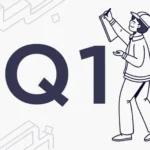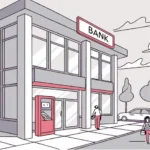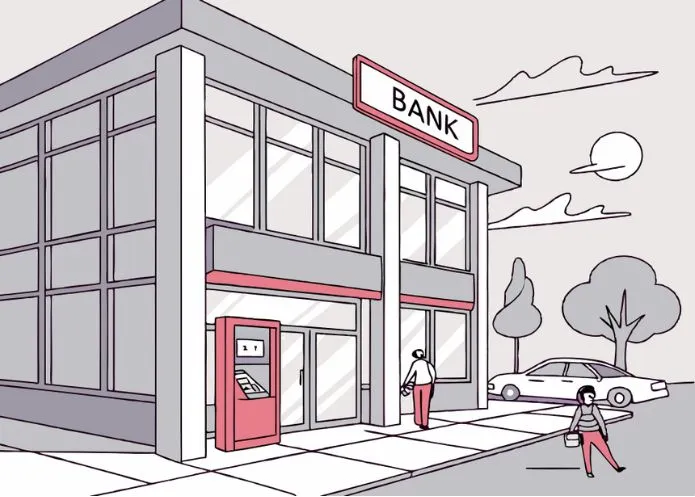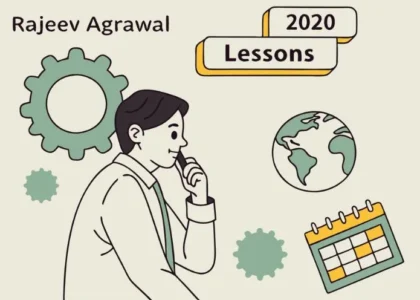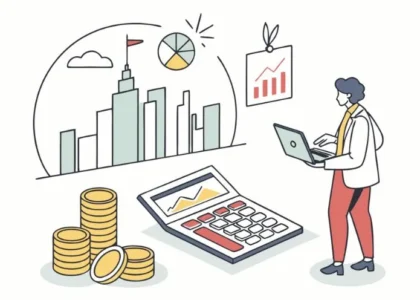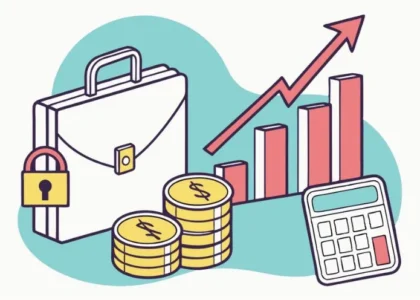Summary
IDFC is a special situation opportunity. IDFC is the parent company of the IDFC First Bank and IDFC AMC. SoTP (Sum of The Parts) valuation indicates that the company is trading at a discount of 67% to the underlying value as shown below:
- IDFC owns 40% of IDFC First Bank. The bank’s market value is INR 141.7 Billion (BN) (accounting for recent capital raises and expanded equity capital). Thus IDFC ownership is worth 56.7 BN.
- IDFC owns 100% of IDFC AMC (Asset Management Company). AMC had assets of INR 1,046 Billion (BN) as of December 2019. Assuming a valuation of 3% of AUM, AMC is worth INR 30 BN.
Hence, the total value of IDFC is INR 86.7 BN as compared to the current market value of INR 27.9 BN implying a 67% discount to the SoTP valuations.
Short-term Trigger
In many cases, holding company discounts persist into the future, because, the holding company’s management doesn’t have a desire to unlock the underlying value of the businesses.
IDFC is different. The reason for the holding structure is the regulatory requirement by RBI for a parent company to own 40% of the bank for the first 5 years. This 5-year window will expire in October 2020. At that point, IDFC has to reduce its stake to 15% (over the next 10 years) in the bank.
There is ambiguity about whether IDFC can reduce its stake to 0% after October 2020. We expect more clarity to emerge as the deadline nears. Business Standard, a reputed business daily, mentioned a few weeks back that RBI is considering allowing IDFC Bank and Bandhan Bank (2 entities that were given license to operate as full-fledged banks in 2014) to reverse merge with their parent holding company after 5 years of operation.
Read moreA reverse merger would be our preferred way to unwind the holding structure of IDFC. It will also reduce the tax leakage for IDFC shareholders. In addition, shareholders could benefit from the higher cost base of IDFC First Bank shares that IDFC has in its books. This tax base price is 56/share against the current price of the bank at 25/share.
Lastly, a reverse merger will alleviate the need for IDFC to search for a buyer for a big block of bank shares. In addition, the company can decide at an opportune time if it wants to sell its AMC business or keep it within the IDFC fold.
Management
Management is a critical element to ensure that the unwinding of the holding company progresses as expected. Sunil Kakar (SK), CEO of IDFC, is focused on reducing the holding company discount. In every conference call, SK highlights the magnitude of the discount at the holding level. He has also taken very tangible actions to reduce this discount:
- Divested a myriad of businesses over the last 3 years. These businesses could have prevented IDFC from reverse merging into IDFC First Bank.
- Worked with regulators to improve the likelihood that IDFC is reverse merged with the bank.
- Returned excess cash to the shareholders through dividends of 3.15/share in FY 20.
- Focused on providing adequate support to AMC business, it can scale up and either be a standalone entity, an attractive buyout candidate, or a valuable business within the merged IDFC Bank.
Overall, management is aligned with shareholders interest and wants to move away from the holding company structure at the earliest.
Management of IDFC First Bank
We should also consider management of IDFC First Bank as that is the key part of the value in IDFC. IDFC First Bank is led by V Vaidyanathan (called VV). VV led the retail push of ICICI bank in early 2000s. He is seen as one of the go-to bankers in retail space. After building out ICICI’s retail presence he moved to Capital First where he transformed that franchise from wholesale oriented to retail oriented.
IDFC First Bank was a wholesale oriented bank before its merger with Capital First. We expect that over the next 3 years, bank will be transformed. In the last 15 months of the merger, many of the metrics at the bank have improved dramatically.
A great operator in VV adds an additional level of comfort to our thesis.
Base case scenario
Our base case scenario assumes the following:
- RBI does allow IDFC to reverse merge with IDFC Bank.
- However, approval for reverse merger takes longer and only comes by end of 2021.
- Shareholders get hold of IDFC First Bank without any tax leakage.
- IDFC First Bank stock is stuck at the current valuation of 141.7 BN (Banks in India have lost close to 20-60% of their value in 2020 so far due to Covid crisis and the resultant moratorium in India).
- We are agnostic to whether IDFC First Bank is allowed to own AMC or it has to be sold. Either way, we assume valuation of AMC at the lower range of 3% of AUM (recent private transactions have been done at 10% of AUM for Mahindra AMC and 4% of AUM for IDBI AMC. Both these AMCs were sub-par with only 50 BN of AUM as compared to 1,005 BN of AUM for IDFC AMC).
- IDFC AMC AUM doesn’t grow over the next 1.5 years. (IDFC AMC has grown its AUM at 15% cagr over the last 2 years since a new CEO took the helm).
- All the above transactions and transfer of shares to shareholders are completed by June 2022.
Under the above assumption, we get:
- IDFC shareholders will fetch 56.7 BN from sale of 40% stake in IDFC First bank.
- IDFC will fetch 30 BN from sale of AMC.
- Assuming tax leakage of 25% for AMC (if it is sold), shareholders will receive 22.5 BN. We are making this assumption as it is more conservative.
- We don’t expect any dividend from the company between now and December 2022.
Calculating rate of return in the above scenario we get:
- 79.2 BN of value by June 2022.
- Market value of IDFC today is 27.9 BN as of June 2020.
- Our expected rate of return under this scenario is a mighty 68%.
Worst case scenario
Let us now consider the worst case scenario:
- RBI doesn’t allow IDFC ownership to go below 15% in the bank.
- IDFC sells its remaining 25% stake in the bank to strategic investors.
- IDFC takes till June 2022 to sell this 25% stake.
- IDFC First Bank stock is stuck at the current valuation of 141.7 BN at the time of sale (Banks in India have lost close to 20-60% of their value in 2020 so far due to Covid crisis and the resultant moratorium in India).
- IDFC AMC is also sold around June 2022.
- IDFC sells its AMC at the lower range of 3% of AUM (recent private transactions have been done at 10% of AUM for Mahindra AMC and 4% of AUM for IDBI AMC. Both these AMCs were sub-par with only 50 BN of AUM as compared to 1,005 BN of AUM for IDFC AMC).
- IDFC AMC AUM doesn’t grow over the next 2 years. (IDFC AMC has grown its AUM at 15% cagr over the last 2 years since a new CEO took the helm).
- Money from the sale is then given to the shareholders causing tax leakage.
- Upstreaming money to shareholder takes another 6 months and it becomes available to shareholders in December 2022.
Under the above, extremely onerous conditions, we still get:
- IDFC will fetch 35.4 BN from sale of 25% stake in IDFC First bank.
- IDFC will fetch 30 BN from sale of AMC.
- Assuming tax leakage of 25% (our expectation would be 22%), shareholders will receive 49 BN.
- We will assume that 15% of IDFC First Bank that IDFC still owns is worth nothing for IDFC shareholders. This assumption is being made to further improve our Margin of Safety.
- We don’t expect any dividend from the company between now and December 2022.
- We also don’t expect any extra capital requirement that IDFC will have to provide for its holding in the bank. In case there is such a requirement, we assume that the residual 15% of IDFC First bank holding will take care of it.
Calculating rate of return in the above scenario we get:
- 49 BN of value by December 2022.
- Market value of IDFC today is 27.9 BN as of June 2020.
- Our expected rate of return under this scenario is still a respectable 25%.
Overall Valuation
IDFC offers a compelling case of:
- Heads we win with expected CAGR of 68% over the next 2 years. Our 27.9 BN of investments in IDFC grows to 79.2 BN by June 2022.
- Tails we still win with expected CAGR of 25% over the next 2.5 years. Our 27.5 BN of investments in IDFC grows to 49 BN by December 2022.
- It is rare to find situations where under adverse conditions, not only do we not lose, we actually win!
- We have assumed that the unlocking takes 2-2.5 years even though the trigger event is less than 0.5 years away. There is a distinct possibility that the unlocking happens much faster than what we have accounted for. This can improve the expected returns.
- In our valuation we have assumed that IDFC First Bank value remains stagnant over the next 2-2.5 years. We think there is a very high probability that valuation of bank improves significantly over this period.
- In our valuation we have assumed that AUM of IDFC AMC remains stagnant over the next 2- 2.5 years. We would be surprised if AUM of AMC doesn’t increase over this period with a corresponding increase in the intrinsic value of AMC. Besides, we have valued AMC at 3% of AUM which is the bottom range for most AMC transactions. Hence, we think there is a decent upside on AMC valuation as well.
- There is additional protection from the fact that both IDFC and IDFC First Bank current valuations are depressed. On 1st January 2020, IDFC was valued at 62 BN as against its current valuation of 27.5 BN. On 1st January 2020, IDFC First Bank was valued at 260 BN as against its current valuation of 121.7 BN (without accounting for additional capital raise of 20 BN in June 2020). With the capital raise Bank is valued at 141.7 BN.
- This case is further bolstered by the management quality at both IDFC and IDFC First Bank. We think IDFC management (SK) is focused on unlocking the value while management at IDFC First Bank (VV) is focused on creating value. VV has a fantastic track record of creating value in the past at Capital First.
- Warburg Pincus has 10% holding in IDFC First Bank (maximum holding an entity can have in an Indian bank). Warburg subscribed to additional shares in the recent round of capital raise to keep its stake at 10%. This shows the confidence that Warburg has in IDFC First Bank.
Risks with the thesis
While we have covered the worst case above, we should still be cognizant of the following:
- We don’t expect significant deterioration in the performance of the bank over the next 2 years. If the performance of the bank suffers, value of IDFC will also suffer.
- Similarly, we expect AMC will continue to sustain its performance of the last few years. If the performance of the AMC suffers, then the value of IDFC will also suffer.
- The whole thesis is based on the premise that holding company will be unwound over the next 2-2.5 years. If management’s view on unwinding the structure changes, then not only can the holding company discount continue; it may even worsen.
- Lastly, companies in India will do well if the economy of the country does well. A key risk is if the Indian economy were to worsen significantly.
Trade Feasibility / Idea Practicality
Company’s current market capitalization is 27.9 BN (Billion) or $372Million. IDFC is listed on both NSE (National Stock Exchange) and BSE (Bombay Stock Exchange). On an average 100 MN (Million) or $1,333 Thousand worth of shares are traded on a daily basis.
Thus there is enough liquidity across NSE and BSE to take advantage of this opportunity.
Disclaimer / Disclosure
- It is safe to assume that DoorDarshi Advisors’ (DDA) and its employees/partners/clients may have position in the stock discussed.
- The stock discussed was for illustration purpose only and not to be construed as investment advice.
- Please do your due diligence and consult your advisor before acting on it.
- Neither DDA nor its employees/partners have had actual/beneficial ownership of one per cent or more at any point so far.
- Neither DDA nor its employees/partners have any other material conflict of interest at the time of publication of the research report.
- Neither DDA nor its employees/partners have received any compensation from the subject company in the past twelve months.
- Neither DDA nor its employees/partners have managed or co-managed public offering of securities for the subject company in the past twelve months.
- Neither DDA nor its employees/partners have received any compensation for investment banking or merchant banking or brokerage services from the subject company in the past twelve months.
- Neither DDA nor its employees/partners have received any compensation for products or services other than investment banking or merchant banking or brokerage services from the subject company in the past twelve months.
- Neither DDA nor its employees/partners have received any compensation from the subject company or any third party in connection with the research report.
- None of the employees/partners of DDA have ever served as an officer, director or employee of the subject company.
- Neither DDA nor its employees/partners have ever been engaged in market-making activity for the subject company.






